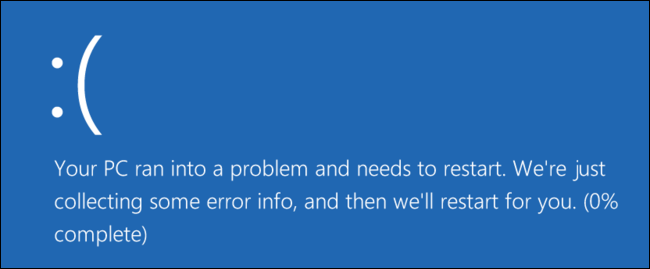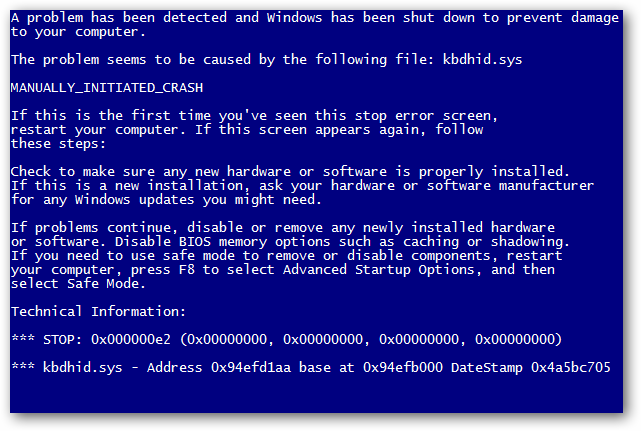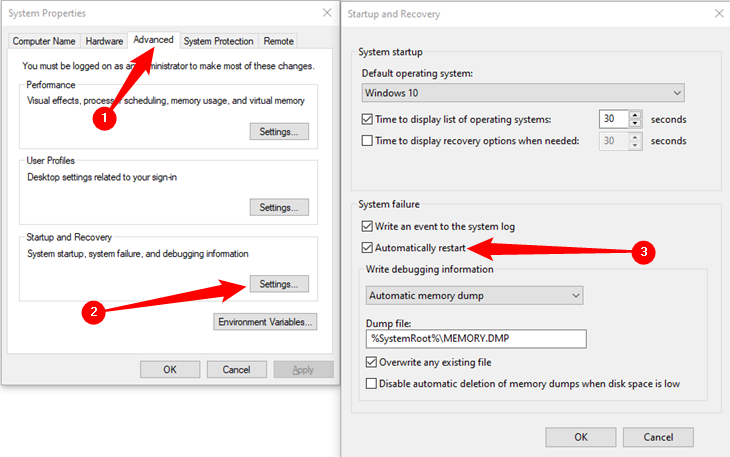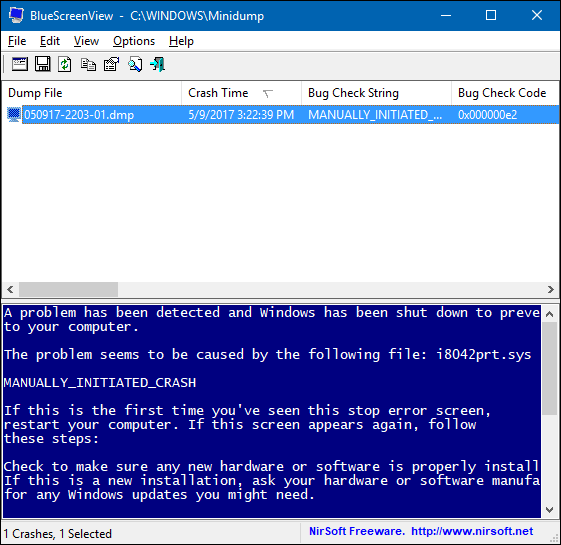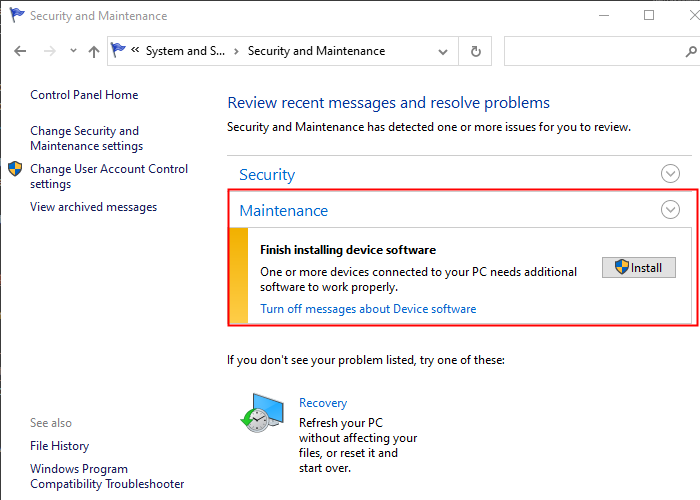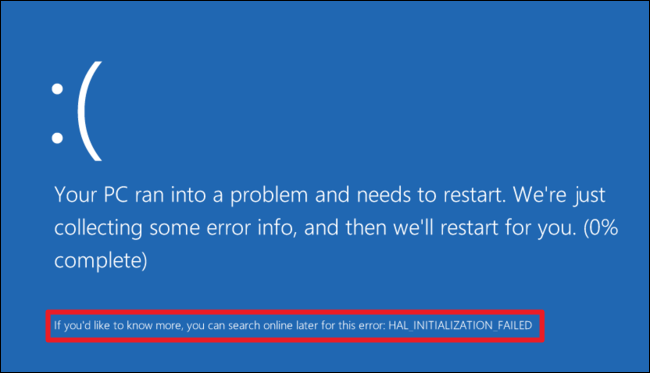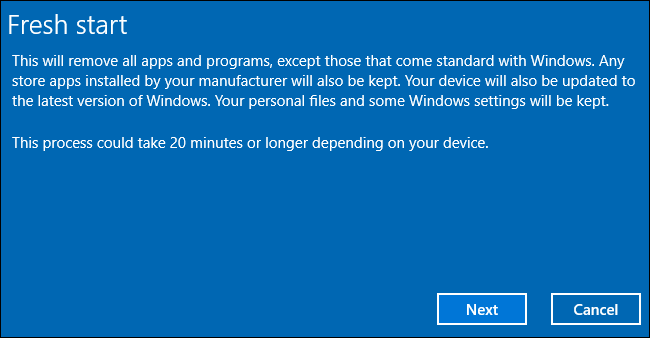Quick Links
Key Takeaways
The Blue Screen of Death (BSOD) is an error screen that appears when something goes critically wrong on your Windows PC. The problem is often a hardware fault, an issue with your drivers, or an error with Windows itself.
The blue screen of death---or BSOD---is always an unwelcome sight. BSODs appear when Microsoft Windows encounters a critical error from which it can't recover. Here are some common causes, and how you can start to troubleshoot a BSOD.
What Is the Meaning of BSOD?
BSOD is a shorthand for Blue Screen of Death. The term "Blue Screen of Death" itself is a humorous reference to the fact that the blue error screen is a telltale sign that your computer had encountered a serious --- even deadly --- error.
The Blue Screen of Death has been a fundamental part of the Windows experience since the 90s, and everyone that runs a Windows PC has encountered a BSOD at one time or another.
The blue screen of death isn't the only colorful death screen Windows has, though. On Windows 10 and Windows 11, Insider Preview versions of Windows have a "green screen of death" instead.
What Causes Blue Screens of Death
Blue screens are generally caused by problems with your computer's hardware or issues with its hardware driver software. Sometimes, they can be caused by issues with low-level software running in the Windows kernel, or a serious driver error. Regular apps usually won't be able to cause blue screens. If an app crashes, it will do so without taking the operating system out with it.
A blue screen occurs when Windows encounters a "STOP Error." This critical failure causes Windows to crash and stop working. The only thing Windows can do at that point is restart the PC. This can lead to data loss, as programs don't have a chance to save their open data.
When a blue screen occurs, Windows automatically creates a "minidump" file that contains information about the crash and saves it to your disk. You can view information about these minidumps to help identify the cause of the blue screen.
Blue screens also look a bit different, depending on what version of Windows you're running. In Windows 10 and Windows 11, blue screens are quite simple. You'll see a frowny-face emoji and the message "Your PC ran into a problem and needs to restart. We're just collecting some error info, and then we'll restart for you."
In Windows 7 and previous versions, the blue screen looked more like a terminal screen, displaying all manner of information. The blue screen begins with "A problem has been detected and Windows has been shut down to prevent damage to your computer."
That's really not as big a deal as it sounds, though. Even in previous versions of Windows, blue screens tended to go by fast enough that reading that information was difficult, anyway. And there are easier ways to get all the details you need for troubleshooting.
Specify Whether Windows Restarts When a BSOD Appears
By default, Windows automatically restarts the computer whenever it encounters a blue screen of death.
If you would like more time to see the blue screen details (or just make sure that it's a blue screen that's happening), you can disable automatic restarts on BSODs from the Windows Control Panel. On Windows 10 and Windows 11, you can also use the Settings app. Open the Settings app by pressing Windows+i, then navigate to System > About > Advanced System Settings.
Make sure you're on the Advanced tab and click "Settings." Untick "Automatically Restart" in the Startup and Recovery window, then click "OK."
Viewing BSOD and Windows Stop Codes Information
NirSoft's free BlueScreenView application offers an easy way to view blue-screen information you might have missed. It works by displaying information contained in those minidump files that are created during BSODs.
This information is also available in the Windows Event Viewer, where blue screen messages are scattered among application crashes and other system log messages.
Troubleshooting BSODS
In Windows, you can troubleshoot blue-screen information using the Action Center. In Windows 10 and Windows 11, head to Control Panel > Security and Maintenance. In Windows 7, head to Control Panel > System and Security.
In the "Maintenance" section, you'll be able to check for solutions to existing problems.
Windows 10 and Windows 11 actually perform this troubleshooting step automatically when your PC restarts after a BSOD. However, it may still be worth paying a visit to the Action Center to see if there are more details or additional troubleshooting steps.
If Windows can't fix the problem on its own, your best bet for troubleshooting the problem is to search the web for the solution. Scan the blue screen or the minidump file for the specific error.
You may see a "Stop Error" number that looks something like "0x00000024." Alternatively, you may see an error like "Driver_IRQL_not_less_or_equal", "MEMORY_MANAGEMENT," or "DPC_WATCHDOG_VIOLATION." Either way, a quick search for the exact error will likely yield good results. In fact, Windows 10 and Windows 11 often recommend right on the blue screen that you perform a search for the error.
If you have trouble locating good advice for solving your problem, don't worry. BSODs can have a variety of root causes. We do have some additional tips that might help you deal with many blue screens:
- Use System Restore: If your system recently started blue-screening, use System Restore to roll its system software back to a previous state. If this works, you'll know that it's likely a software problem.
- Scan for Malware: Malware that digs deep into Windows and gets its hooks into the Windows kernel at a low level can cause system instability. Scan your computer for malware to ensure buggy malicious software isn't causing it to crash.
- Install Updated Drivers: An incorrectly installed or buggy driver can lead to crashes. Download the latest drivers for your computer's hardware from your computer manufacturer's website and install them -- this may fix BSODs caused by driver problems.
- Boot Into Safe Mode: If your computer is blue-screening every time you turn it on, try booting into safe mode. In safe mode, Windows loads only the essential drivers. If a driver you've installed is causing Windows to blue screen, it shouldn't do so in safe mode. You can work on fixing the problem from safe mode.
- Check for Hardware Problems: Blue screens can be caused by faulty hardware in your computer. Try testing your computer's memory for errors and checking its temperature to ensure that it isn't overheating. If that fails, you might need to test other hardware components---or hire a pro to do it for you.
- Reinstall Windows: Resetting Windows---or performing a clean install---is the nuclear option. It will blow away your existing system software, replacing it with a fresh Windows system. If your computer continues to blue screen after this, you likely have a hardware problem.
A computer in proper working state shouldn't blue-screen at all, but no software or hardware is perfect. Even a properly functioning computer may blue screen on rare occasions for no apparent reason---possibly as the result of rare driver bugs or hardware issues. If your computer is regularly blue-screening, you have a problem. If you encounter a blue screen once every two years, don't worry about it.


